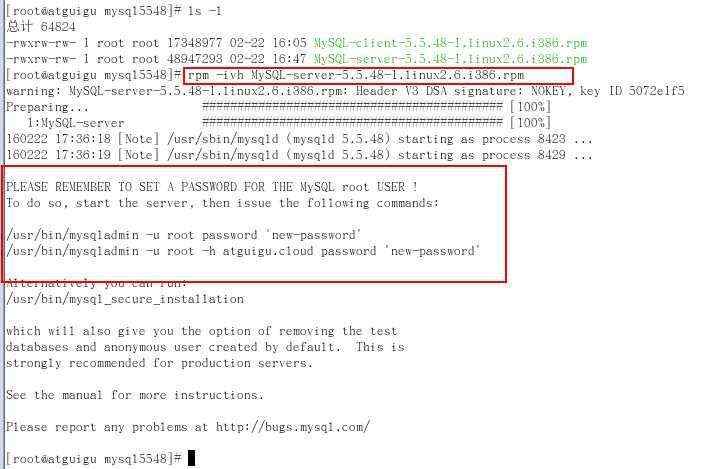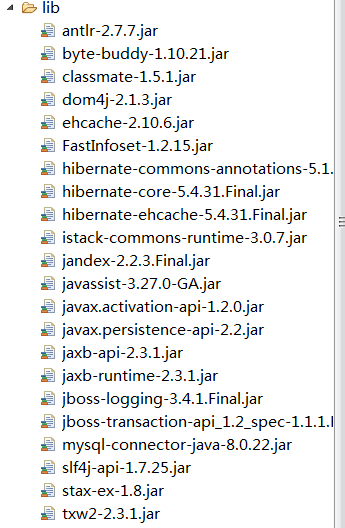本文主要介绍静默安装数据库使用的模板如何使用及配置
1.准备responseFile文件
从Oracle软件中获取
[oracle@rhel64 ~]$ cd database/response/ dbca.rsp db_install.rsp netca.rsp
其中database是Oracle软件解压后生成的目录。可见在response目录下有三个模板,其中dbca.rsp是用来创建数据库的。db_install.rsp是用来安装Oracle软件的。netca.rsp是用来创建监听器的。当然也可在db_install.rsp中直接创建数据库。
2.编辑responseFile文件
#可以去除说明,直接打开模板会对应有说明
[oracle@node2 ~]$ grep -Ev "^$|^#" db_install.rsp
oracle.install.responseFileVersion=/oracle/install/rspfmt_dbinstall_response_schema_v11_2_0
·oracle.install.option=INSTALL_DB_SWONY
·ORACLE_HOSTNAME=rhel
·UNIX_GROUP_NAME=oinstall
·INVENTORY_LOCATION=/u01/oraInventory
·SELECTED_LANGUAGES=en
·ORACLE_HOME=/u01/oracle
·ORACLE_BASE=/u01
·oracle.install.db.InstallEdition=EE
oracle.install.db.EEOptionsSelection=false
oracle.install.db.optionalComponents=oracle.rdbms.partitioning:11.2.0.4.0,oracle.oraolap:11.2.0.4.0,oracle.rdbms.dm:11.2.0.4.0,oracle.rdbms.dv:11.2.0.4.0,oracle.rdbms.lbac:11.2.0.4.0,oracle.rdbms.rat:11.2.0.4.0
·oracle.install.db.DBA_GROUP=dba
·oracle.install.db.OPER_GROUP=oinstall
oracle.install.db.CLUSTER_NODES=
oracle.install.db.isRACOneInstall=
oracle.install.db.racOneServiceName=
·oracle.install.db.config.starterdb.type=GENERAL_PURPOSE
·oracle.install.db.config.starterdb.globalDBName=prod
·oracle.install.db.config.starterdb.SID=prod
·oracle.install.db.config.starterdb.characterSet=AL32UTF8
·oracle.install.db.config.starterdb.memoryOption=true
·oracle.install.db.config.starterdb.memoryLimit=400
oracle.install.db.config.starterdb.installExampleSchemas=false
oracle.install.db.config.starterdb.enableSecuritySettings=true
·oracle.install.db.config.starterdb.password.ALL=oracle
oracle.install.db.config.starterdb.password.SYS=
oracle.install.db.config.starterdb.password.SYSTEM=
oracle.install.db.config.starterdb.password.SYSMAN=
oracle.install.db.config.starterdb.password.DBSNMP=
oracle.install.db.config.starterdb.control=DB_CONTROL
oracle.install.db.config.starterdb.gridcontrol.gridControlServiceURL=
oracle.install.db.config.starterdb.automatedBackup.enable=false
oracle.install.db.config.starterdb.automatedBackup.osuid=
oracle.install.db.config.starterdb.automatedBackup.ospwd=
·oracle.install.db.config.starterdb.storageType=FILE_SYSTEM_STORAGE
·oracle.install.db.config.starterdb.fileSystemStorage.dataLocation=/u01//oradata
·oracle.install.db.config.starterdb.fileSystemStorage.recoveryLocation=/u01/fast_recovery_area
oracle.install.db.config.asm.diskGroup=
oracle.install.db.config.asm.ASMSNMPPassword=
MYORACLESUPPORT_USERNAME=
MYORACLESUPPORT_PASSWORD=
SECURITY_UPDATES_VIA_MYORACLESUPPORT=
·DECLINE_SECURITY_UPDATES=true
PROXY_HOST=
PROXY_PORT=
PROXY_USER=
PROXY_PWD=
PROXY_REALM=
COLLECTOR_SUPPORTHUB_URL=
#oracle.installer.autoupdates.option=SKIP_UPDATES
#oracle.installer.autoupdates.downloadUpdatesLoc=
#AUTOUPDATES_MYORACLESUPPORT_USERNAME=
#AUTOUPDATES_MYORACLESUPPORT_PASSWORD=注:带有“·”的是需要修改的
开始静默安装
[oracle@rhel database]$ ./runInstaller -silent -ignoreSysPrereqs -responseFile /home/oracle/db_install.rsp
其中-silent指的是静默安装,-ignorePrereq忽略prerequisite的检查结果,responseFile是种子文件。
dbca命令行参数还是及其丰富的,完全可DIY建库。 下面,用最少参数建了一个库。
[oracle@rhel~]$ dbca -silent -createDatabase -templateName General_Purpose.dbc -gdbName prod -sysPassword oracle -systemPassword oracle
Copying database files
1% complete
3% complete
11% complete
18% complete
26% complete
37% complete
Creating and starting Oracle instance
40% complete
45% complete
50% complete
55% complete
56% complete
60% complete
62% complete
Completing Database Creation
66% complete
70% complete
73% complete
85% complete
96% complete
100% complete
Look at the log file "/u01/app/oracle/cfgtoollogs/dbca/test/test.log" for further details.
在这里建库时,创建的实例名需要与.bash_profile文件中的SID相同。
备注:以下为完成的配置脚本,有说明及配置情况
####################################################################
## Copyright(c) Oracle Corporation 1998,2008. All rights reserved.##
## ##
## Specify values for the variables listed below to customize ##
## your installation. ##
## ##
## Each variable is associated with a comment. The comment ##
## can help to populate the variables with the appropriate ##
## values. ##
## ##
## IMPORTANT NOTE: This file contains plain text passwords and ##
## should be secured to have read permission only by oracle user ##
## or db administrator who owns this installation. ##
## ##
#####################################################################------------------------------------------------------------------------------
# Do not change the following system generated value.
#------------------------------------------------------------------------------
oracle.install.responseFileVersion=/oracle/install/rspfmt_dbinstall_response_schema_v11_2_0#------------------------------------------------------------------------------
# %%%仅仅安装数据库软件不建库%%%
# Specify the installation option.
# It can be one of the following:
# 1. INSTALL_DB_SWONLY
# 2. INSTALL_DB_AND_CONFIG
# 3. UPGRADE_DB
#-------------------------------------------------------------------------------
oracle.install.option=INSTALL_DB_SWONLY#-------------------------------------------------------------------------------
# %%%计算机名%%%
# Specify the hostname of the system as set during the install. It can be used
# to force the installation to use an alternative hostname rather than using the
# first hostname found on the system. (e.g., for systems with multiple hostnames
# and network interfaces)计算机名
#-------------------------------------------------------------------------------
ORACLE_HOSTNAME=YJH#-------------------------------------------------------------------------------
# %%%Unix组%%%
# Specify the Unix group to be set for the inventory directory.
#-------------------------------------------------------------------------------
UNIX_GROUP_NAME=oinstall#-------------------------------------------------------------------------------
# %%%保存库文件位置%%%
# Specify the location which holds the inventory files.
#-------------------------------------------------------------------------------
INVENTORY_LOCATION=/u01/oraInventory#-------------------------------------------------------------------------------
# %%%安装语言%%%
# Specify the languages in which the components will be installed.
#
# en : English ja : Japanese
# fr : French ko : Korean
# ar : Arabic es : Latin American Spanish
# bn : Bengali lv : Latvian
# pt_BR: Brazilian Portuguese lt : Lithuanian
# bg : Bulgarian ms : Malay
# fr_CA: Canadian French es_MX: Mexican Spanish
# ca : Catalan no : Norwegian
# hr : Croatian pl : Polish
# cs : Czech pt : Portuguese
# da : Danish ro : Romanian
# nl : Dutch ru : Russian
# ar_EG: Egyptian zh_CN: Simplified Chinese
# en_GB: English (Great Britain) sk : Slovak
# et : Estonian sl : Slovenian
# fi : Finnish es_ES: Spanish
# de : German sv : Swedish
# el : Greek th : Thai
# iw : Hebrew zh_TW: Traditional Chinese
# hu : Hungarian tr : Turkish
# is : Icelandic uk : Ukrainian
# in : Indonesian vi : Vietnamese
# it : Italian
#
# Example : SELECTED_LANGUAGES=en,fr,ja
#------------------------------------------------------------------------------
SELECTED_LANGUAGES=en#------------------------------------------------------------------------------
# %%%ORACLE_HOME%%%
# Specify the complete path of the Oracle Home.
#------------------------------------------------------------------------------
ORACLE_HOME=/u01/oracle#------------------------------------------------------------------------------
# %%%ORACLE_BASE%%%
# Specify the complete path of the Oracle Base.
#------------------------------------------------------------------------------
ORACLE_BASE=/u01#------------------------------------------------------------------------------
# %%%指定安装版本%%%
# Specify the installation edition of the component.
#
# The value should contain only one of these choices.
# EE : Enterprise Edition 企业版
# SE : Standard Edition
# SEONE : Standard Edition One
# PE : Personal Edition (WINDOWS ONLY)
#------------------------------------------------------------------------------
oracle.install.db.InstallEdition=EE#------------------------------------------------------------------------------
# This variable is used to enable or disable custom install.
#
# true : Components mentioned as part of 'customComponents' property
# are considered for install.
# false : Value for 'customComponents' is not considered.
#------------------------------------------------------------------------------
oracle.install.db.isCustomInstall=false#------------------------------------------------------------------------------
# This variable is considered only if 'IsCustomInstall' is set to true.
#
# Description: List of Enterprise Edition Options you would like to install.
#
# The following choices are available. You may specify any
# combination of these choices. The components you choose should
# be specified in the form "internal-component-name:version"
# Below is a list of components you may specify to install.
#
# oracle.rdbms.partitioning:11.2.0.1.0 - Oracle Partitioning
# oracle.rdbms.dm:11.2.0.1.0 - Oracle Data Mining
# oracle.rdbms.dv:11.2.0.1.0 - Oracle Database Vault
# oracle.rdbms.lbac:11.2.0.1.0 - Oracle Label Security
# oracle.rdbms.rat:11.2.0.1.0 - Oracle Real Application Testing
# oracle.oraolap:11.2.0.1.0 - Oracle OLAP
#------------------------------------------------------------------------------
oracle.install.db.customComponents=oracle.server:11.2.0.1.0,oracle.sysman.ccr:10.2.7.0.0,oracle.xdk:11.2.0.1.0,oracle.rdbms.oci:11.2.0.1.0,oracle.network:11.2.0.1.0,oracle.network.listener:11.2.0.1.0,oracle.rdbms:11.2.0.1.0,oracle.options:11.2.0.1.0,oracle.rdbms.partitioning:11.2.0.1.0,oracle.oraolap:11.2.0.1.0,oracle.rdbms.dm:11.2.0.1.0,oracle.rdbms.dv:11.2.0.1.0,orcle.rdbms.lbac:11.2.0.1.0,oracle.rdbms.rat:11.2.0.1.0###############################################################################
# #
# PRIVILEGED OPERATING SYSTEM GROUPS #
# ------------------------------------------ #
# Provide values for the OS groups to which OSDBA and OSOPER privileges #
# needs to be granted. If the install is being performed as a member of the #
# group "dba", then that will be used unless specified otherwise below. #
# #
################################################################################------------------------------------------------------------------------------
# %%%DBA授予特权组%%%
# The DBA_GROUP is the OS group which is to be granted OSDBA privileges.
#------------------------------------------------------------------------------
oracle.install.db.DBA_GROUP=dba#------------------------------------------------------------------------------
# %%%授予OSOPER操作组%%%
# The OPER_GROUP is the OS group which is to be granted OSOPER privileges.
#------------------------------------------------------------------------------
oracle.install.db.OPER_GROUP=oinstall#------------------------------------------------------------------------------
# %%%指定安装RAC节点名称%%%
# Specify the cluster node names selected during the installation.
#------------------------------------------------------------------------------
oracle.install.db.CLUSTER_NODES=#------------------------------------------------------------------------------
# %%%指定创建数据库类型%%%
# Specify the type of database to create.
# It can be one of the following:
# - GENERAL_PURPOSE/TRANSACTION_PROCESSING
# - DATA_WAREHOUSE
#------------------------------------------------------------------------------
oracle.install.db.config.starterdb.type=GENERAL_PURPOSE#------------------------------------------------------------------------------
# %%%全局数据库名称%%%
# Specify the Starter Database Global Database Name.
#------------------------------------------------------------------------------
oracle.install.db.config.starterdb.globalDBName=prod#------------------------------------------------------------------------------
# %%%数据库SID%%%
# Specify the Starter Database SID.
#------------------------------------------------------------------------------
oracle.install.db.config.starterdb.SID=prod#------------------------------------------------------------------------------
# %%%字符集%%%
# Specify the Starter Database character set.
#
# It can be one of the following:
# AL32UTF8, WE8ISO8859P15, WE8MSWIN1252, EE8ISO8859P2,
# EE8MSWIN1250, NE8ISO8859P10, NEE8ISO8859P4, BLT8MSWIN1257,
# BLT8ISO8859P13, CL8ISO8859P5, CL8MSWIN1251, AR8ISO8859P6,
# AR8MSWIN1256, EL8ISO8859P7, EL8MSWIN1253, IW8ISO8859P8,
# IW8MSWIN1255, JA16EUC, JA16EUCTILDE, JA16SJIS, JA16SJISTILDE,
# KO16MSWIN949, ZHS16GBK, TH8TISASCII, ZHT32EUC, ZHT16MSWIN950,
# ZHT16HKSCS, WE8ISO8859P9, TR8MSWIN1254, VN8MSWIN1258
#------------------------------------------------------------------------------
oracle.install.db.config.starterdb.characterSet=AL32UTF8#------------------------------------------------------------------------------
# %%%是否自动内存管理%%%
# This variable should be set to true if Automatic Memory Management
# in Database is desired.
# If Automatic Memory Management is not desired, and memory allocation
# is to be done manually, then set it to false.
#------------------------------------------------------------------------------
oracle.install.db.config.starterdb.memoryOption=true#------------------------------------------------------------------------------
# %%%内存%%%
# Specify the total memory allocation for the database. Value(in MB) should be
# at least 256 MB, and should not exceed the total physical memory available
# on the system.
# Example: oracle.install.db.config.starterdb.memoryLimit=512
#------------------------------------------------------------------------------
oracle.install.db.config.starterdb.memoryLimit=400#------------------------------------------------------------------------------
# This variable controls whether to load Example Schemas onto the starter
# database or not.
#------------------------------------------------------------------------------
oracle.install.db.config.starterdb.installExampleSchemas=false#------------------------------------------------------------------------------
# This variable includes enabling audit settings, configuring password profiles
# and revoking some grants to public. These settings are provided by default.
# These settings may also be disabled.
#------------------------------------------------------------------------------
oracle.install.db.config.starterdb.enableSecuritySettings=true###############################################################################
# #
# Passwords can be supplied for the following four schemas in the #
# starter database: #
# SYS #
# SYSTEM #
# SYSMAN (used by Enterprise Manager) #
# DBSNMP (used by Enterprise Manager) #
# #
# Same password can be used for all accounts (not recommended) #
# or different passwords for each account can be provided (recommended) #
# #
################################################################################------------------------------------------------------------------------------
# %%%所有管理用户使用的密码%%%
# This variable holds the password that is to be used for all schemas in the
# starter database.
#-------------------------------------------------------------------------------
oracle.install.db.config.starterdb.password.ALL=oracle#-------------------------------------------------------------------------------
# Specify the SYS password for the starter database.
#-------------------------------------------------------------------------------
oracle.install.db.config.starterdb.password.SYS=#-------------------------------------------------------------------------------
# Specify the SYSTEM password for the starter database.
#-------------------------------------------------------------------------------
oracle.install.db.config.starterdb.password.SYSTEM=#-------------------------------------------------------------------------------
# Specify the SYSMAN password for the starter database.
#-------------------------------------------------------------------------------
oracle.install.db.config.starterdb.password.SYSMAN=#-------------------------------------------------------------------------------
# Specify the DBSNMP password for the starter database.
#-------------------------------------------------------------------------------
oracle.install.db.config.starterdb.password.DBSNMP=#-------------------------------------------------------------------------------
# Specify the management option to be selected for the starter database.
# It can be one of the following:
# 1. GRID_CONTROL
# 2. DB_CONTROL
#-------------------------------------------------------------------------------
oracle.install.db.config.starterdb.control=DB_CONTROL#-------------------------------------------------------------------------------
# Specify the Management Service to use if Grid Control is selected to manage
# the database.
#-------------------------------------------------------------------------------
oracle.install.db.config.starterdb.gridcontrol.gridControlServiceURL=#-------------------------------------------------------------------------------
# This variable indicates whether to receive email notification for critical
# alerts when using DB control.
#-------------------------------------------------------------------------------
oracle.install.db.config.starterdb.dbcontrol.enableEmailNotification=false#-------------------------------------------------------------------------------
# Specify the email address to which the notifications are to be sent.
#-------------------------------------------------------------------------------
oracle.install.db.config.starterdb.dbcontrol.emailAddress=#-------------------------------------------------------------------------------
# Specify the SMTP server used for email notifications.
#-------------------------------------------------------------------------------
oracle.install.db.config.starterdb.dbcontrol.SMTPServer=###############################################################################
# #
# SPECIFY BACKUP AND RECOVERY OPTIONS #
# ------------------------------------ #
# Out-of-box backup and recovery options for the database can be mentioned #
# using the entries below. #
# #
################################################################################------------------------------------------------------------------------------
# This variable is to be set to false if automated backup is not required. Else
# this can be set to true.
#------------------------------------------------------------------------------
oracle.install.db.config.starterdb.automatedBackup.enable=false#------------------------------------------------------------------------------
# Regardless of the type of storage that is chosen for backup and recovery, if
# automated backups are enabled, a job will be scheduled to run daily at
# 2:00 AM to backup the database. This job will run as the operating system
# user that is specified in this variable.
#------------------------------------------------------------------------------
oracle.install.db.config.starterdb.automatedBackup.osuid=#-------------------------------------------------------------------------------
# Regardless of the type of storage that is chosen for backup and recovery, if
# automated backups are enabled, a job will be scheduled to run daily at
# 2:00 AM to backup the database. This job will run as the operating system user
# specified by the above entry. The following entry stores the password for the
# above operating system user.
#-------------------------------------------------------------------------------
oracle.install.db.config.starterdb.automatedBackup.ospwd=#-------------------------------------------------------------------------------
# %%%指定数据库使用的存储类型%%%
# Specify the type of storage to use for the database.
# It can be one of the following:
# - FILE_SYSTEM_STORAGE
# - ASM_STORAGE
#------------------------------------------------------------------------------
oracle.install.db.config.starterdb.storageType=FILE_SYSTEM_STORAGE#-------------------------------------------------------------------------------
# %%%指定数据文件控制文件日志文件路径%%%
# Specify the database file location which is a directory for datafiles, control
# files, redo logs.
#
# Applicable only when oracle.install.db.config.starterdb.storage=FILE_SYSTEM
#-------------------------------------------------------------------------------
oracle.install.db.config.starterdb.fileSystemStorage.dataLocation=/u01/oradata#-------------------------------------------------------------------------------
# %%%指定备份恢复文件路径%%%
# Specify the backup and recovery location.
#
# Applicable only when oracle.install.db.config.starterdb.storage=FILE_SYSTEM
#-------------------------------------------------------------------------------
oracle.install.db.config.starterdb.fileSystemStorage.recoveryLocation=/u01/fast_recovery_area#-------------------------------------------------------------------------------
# Specify the existing ASM disk groups to be used for storage.
#
# Applicable only when oracle.install.db.config.starterdb.storage=ASM
#-------------------------------------------------------------------------------
oracle.install.db.config.asm.diskGroup=#-------------------------------------------------------------------------------
# Specify the password for ASMSNMP user of the ASM instance.
#
# Applicable only when oracle.install.db.config.starterdb.storage=ASM_SYSTEM
#-------------------------------------------------------------------------------
oracle.install.db.config.asm.ASMSNMPPassword=#------------------------------------------------------------------------------
# Specify the My Oracle Support Account Username.
#
# Example : MYORACLESUPPORT_USERNAME=metalink
#------------------------------------------------------------------------------
MYORACLESUPPORT_USERNAME=#------------------------------------------------------------------------------
# Specify the My Oracle Support Account Username password.
#
# Example : MYORACLESUPPORT_PASSWORD=password
#------------------------------------------------------------------------------
MYORACLESUPPORT_PASSWORD=#------------------------------------------------------------------------------
# Specify whether to enable the user to set the password for
# My Oracle Support credentials. The value can be either true or false.
# If left blank it will be assumed to be false.
#
# Example : SECURITY_UPDATES_VIA_MYORACLESUPPORT=true
#------------------------------------------------------------------------------
SECURITY_UPDATES_VIA_MYORACLESUPPORT=#------------------------------------------------------------------------------
# %%%指定用户是否希望为连接提供任何代理详细信息%%%
# Specify whether user wants to give any proxy details for connection.
# The value can be either true or false. If left blank it will be assumed
# to be false.
#
# Example : DECLINE_SECURITY_UPDATES=false
#------------------------------------------------------------------------------
DECLINE_SECURITY_UPDATES=true#------------------------------------------------------------------------------
# Specify the Proxy server name. Length should be greater than zero.
#
# Example : PROXY_HOST=proxy.domain.com
#------------------------------------------------------------------------------
PROXY_HOST=#------------------------------------------------------------------------------
# Specify the proxy port number. Should be Numeric and atleast 2 chars.
#
# Example : PROXY_PORT=25
#------------------------------------------------------------------------------
PROXY_PORT=#------------------------------------------------------------------------------
# Specify the proxy user name. Leave PROXY_USER and PROXY_PWD
# blank if your proxy server requires no authentication.
#
# Example : PROXY_USER=username
#------------------------------------------------------------------------------
PROXY_USER=#------------------------------------------------------------------------------
# Specify the proxy password. Leave PROXY_USER and PROXY_PWD
# blank if your proxy server requires no authentication.
#
# Example : PROXY_PWD=password
#------------------------------------------------------------------------------
PROXY_PWD=












 京公网安备 11010802041100号
京公网安备 11010802041100号